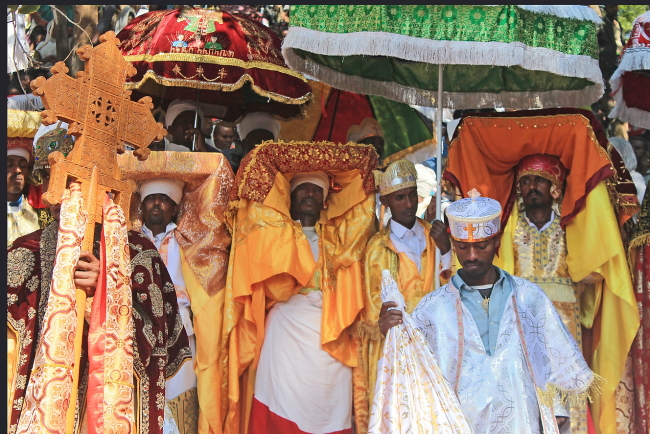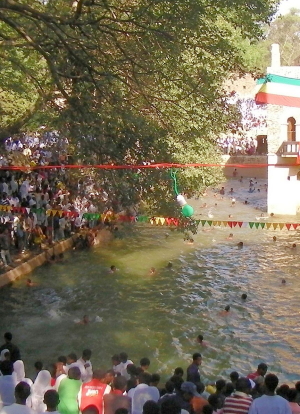THURSDAY, JANUARY 19: Rich, deep hues and velvet fabrics dot the landscape in Ethiopia during one of the grandest festivals of the year: Timkat, the Ethiopian Orthodox Christian ceremony commemorating the baptism of Jesus.
Did you know? Ethiopia is home to more UNESCO sites than any other country in Africa. In December 2019, UNESCO inscribed Timkat on the Representative List of the Intangible Cultural Heritage of Humanity.
As the countryside’s rolling hills are blooming with yellow spring flowers, pilgrims and priests dress in their finest clothing and form a procession that weaves through the rock-hewn churches and age-old passageways of Ethiopia. Central to the processions are models of the Ark of the Covenant (called tabots), carried by priests with caution and pride. To Ethiopian Christians, the tabot signifies the manifestation of Jesus as the Savior, when he came to the Jordan River to be baptized.
Timkat events begin on Timkat eve, when the tabots are ceremoniously wrapped in cloth and carried by priests in a procession. In the earliest morning hours, while the sky is still dark, crowds gather near bodies of water to witness a blessing of the waters—a reenactment of the baptism of Christ. Crowds are sprinkled with water, and baptismal vows are renewed. When all rituals are complete, pilgrims return home for feasts and continued celebrations.
Interested to learn more?
Read a message from UNESCO on Timkat, here.
GM Today recommends Timkat as one element of “A Year of Wild Human Experiences.” Check out the article, here.
The Library of Congress provides information on Timkat, available here.
Read more information about the “Ethiopian Epiphany” from UNESCO, here.

